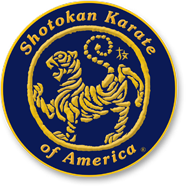
Keith Kirk (leader) began his martial arts training in 1974. In Kenpo Karate where he achieved the rank of third-degree black belt. Keith opened his first karate club at Hendrix College in 1980. After college he and Carla joined the PaSaRyu Organization, headquartered in Memphis TN. They opened their first commercial dojo in 1986 and ran it until the mid 90s. From the mid 1990s Keith led instructor development for the PaSaRyu organization, where he was awarded a sixth-degree black belt. In 2007 Keith and his family joined Shotokan Karate of America. Keith was an instructor and the dojo manager at the Memphis Shotokan dojo since 2007. He is currently a third-degree black belt in SKA. Keith and Carla now live in Florida, and they are excited to open their own dojo to serve the Tampa area. Keith is a Sandan, or third-degree black belt in Shotokan.

Carla Kirk began her martial arts journey as a college student in 1979, Isshinryu Karate. She transferred to Hendrix College and began training with me in 1980. Carla achieved the rank of second-degree black Belt in Kenpo Karate. In the Middle 80s Carla joined the PaSaRyu Organization where she achieved the rank of fourth Degree Black Belt. Carla has been a member of Shotokan Karate of America since 2007. Carla founded and ran the Arkansas Karate circuit for a decade. Carla is a Nidan, or second-degree black belt in Shotokan.

Rachel Kirk: Started her training at the very young age of four. It’s hard not to kick a bit of butt with your mom and dad taking you to practice every week. She is now a second-degree black belt in Shotokan.
We have been fortunate to travel and train together as a family for most of our lives. We love what we do, and we are excited for the opportunity to pass on to the community the rich history of traditional Martial Arts. Rachel is a Nidan, or second-degree black belt in Shotokan.

Shotokan History & Principles
Born at the end of the Edo Period, Shotokan Karate has been around since the 1800s. Ginchin Funakoshi, the creator of the style was born in Okinawa and the knowledge he passed on to his students in Japan eventually found its way across the Pacific to the United States and beyond. Many countries the world over have official practitioners of the style.
Shotokan was the name of the first official dojo built by Gichin Funakoshi, in 1936. It was destroyed in 1945 as a result of the Tokyo Air Raids. Shoto (松涛, Shōtō), meaning “pine-waves” (the movement of pine needles when the wind blows through them), was Funakoshi’s pen-name, which he used in his poetic and philosophical writings and messages to his students. The Japanese kan (館, kan) means “house” or “hall”. In honor of their sensei, Funakoshi’s students created a sign reading shōtō-kan, which they placed above the entrance of the hall where Funakoshi taught.[5] Gichin Funakoshi never gave his system a name, just calling it karate.
Top 10 Principles of Karate-do
- Karate begins and ends with rei (respect).
- There is no first strike in karate.
- Karate stands on the side of justice.
- First know yourself, then know others.
- Mentality over technique.
- The heart must be set free.
- Calamity springs from carelessness.
- Karate goes beyond the dojo.
- Karate is a lifelong pursuit.
- Apply the way of karate to all things. Therein lies its beauty.
